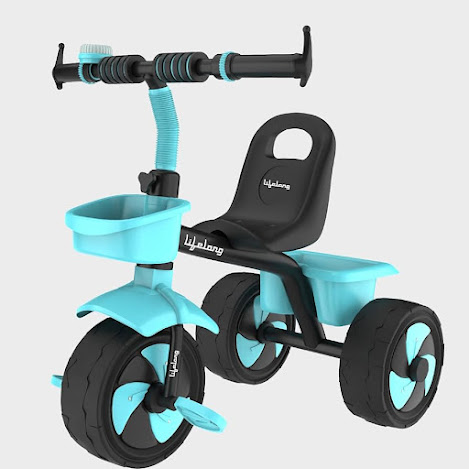Electric Tricycles: The Future of Urban Commuting
In the ever-evolving landscape of urban transportation, electric tricycles are emerging as a promising solution to the challenges of commuting in densely populated cities. Offering a blend of efficiency, convenience, and eco-friendliness, these innovative vehicles are reshaping the way people navigate urban environments. From reducing carbon emissions to providing an accessible mode of transportation for all, electric tricycles are paving the way for a more sustainable and inclusive future.
The Rise of Electric Tricycles
With concerns about pollution, traffic congestion, and the limited availability of parking spaces, cities around the world are seeking alternative transportation solutions. Electric tricycles have emerged as a viable option, offering several advantages over traditional modes of transportation such as cars, motorcycles, and bicycles.
One of the key reasons for the rise of electric tricycle is their eco-friendly nature. Powered by electric motors, these vehicles produce zero emissions, making them an environmentally responsible choice for urban commuting. In an era where sustainability is paramount, electric tricycles offer a cleaner and greener alternative to conventional vehicles, helping to reduce air pollution and combat climate change.
Convenience and Accessibility
Electric tricycles are also highly convenient and accessible, particularly for those who may have difficulty using traditional bicycles or motorcycles. With a stable three-wheel design, electric tricycles provide enhanced stability and balance, making them suitable for a wide range of riders, including seniors and individuals with disabilities. This accessibility factor is crucial for promoting inclusivity in urban transportation, ensuring that everyone can enjoy the benefits of convenient and efficient mobility.
Moreover, electric tricycles offer a comfortable riding experience, with features such as padded seats, ergonomic handlebars, and spacious cargo areas for carrying groceries or other items. Their electric assistance further enhances convenience, allowing riders to travel longer distances with less effort. Whether for daily commuting or recreational purposes, electric tricycles offer a practical and enjoyable means of getting around the city.
Cost-Effectiveness and Efficiency
In addition to their environmental and social benefits, electric tricycles are also cost-effective and efficient to operate. Compared to cars or motorcycles, which require expensive fuel and maintenance, electric tricycles have lower operating costs and minimal maintenance requirements. With rising fuel prices and concerns about the long-term sustainability of fossil fuels, electric tricycles offer a more affordable and sustainable mode of transportation for urban dwellers.
Furthermore, electric tricycles can navigate congested urban streets more easily than larger vehicles, allowing riders to bypass traffic jams and reach their destinations more quickly. This efficiency not only saves time but also reduces stress and frustration associated with sitting in traffic. By offering a swift and efficient mode of transportation, electric tricycles help improve overall mobility in urban areas, contributing to a more vibrant and dynamic cityscape.
Challenges and Opportunities
While electric tricycles hold great promise for the future of urban commuting, there are still challenges to overcome. Infrastructure limitations, including the availability of charging stations and designated bike lanes, can hinder the widespread adoption of electric tricycles in some cities. Additionally, regulatory frameworks and safety concerns may need to be addressed to ensure the safe integration of electric tricycles into existing transportation systems.
However, these challenges also present opportunities for innovation and collaboration. Governments, urban planners, and transportation companies can work together to invest in infrastructure improvements and develop policies that support the growth of electric tricycle usage. By creating a more conducive environment for electric tricycles, cities can unlock their full potential as a sustainable and efficient mode of urban transportation.
Conclusion
In conclusion, electric tricycles represent a promising solution to the challenges of urban commuting in the 21st century. With their eco-friendly design, accessibility features, and cost-effectiveness, electric tricycles offer a compelling alternative to traditional modes of transportation. By embracing electric tricycles, cities can reduce emissions, improve mobility, and create more inclusive transportation systems for all residents. As we look to the future of urban transportation, electric tricycles are poised to play a central role in shaping a more sustainable and livable urban environment.

Comments
Post a Comment